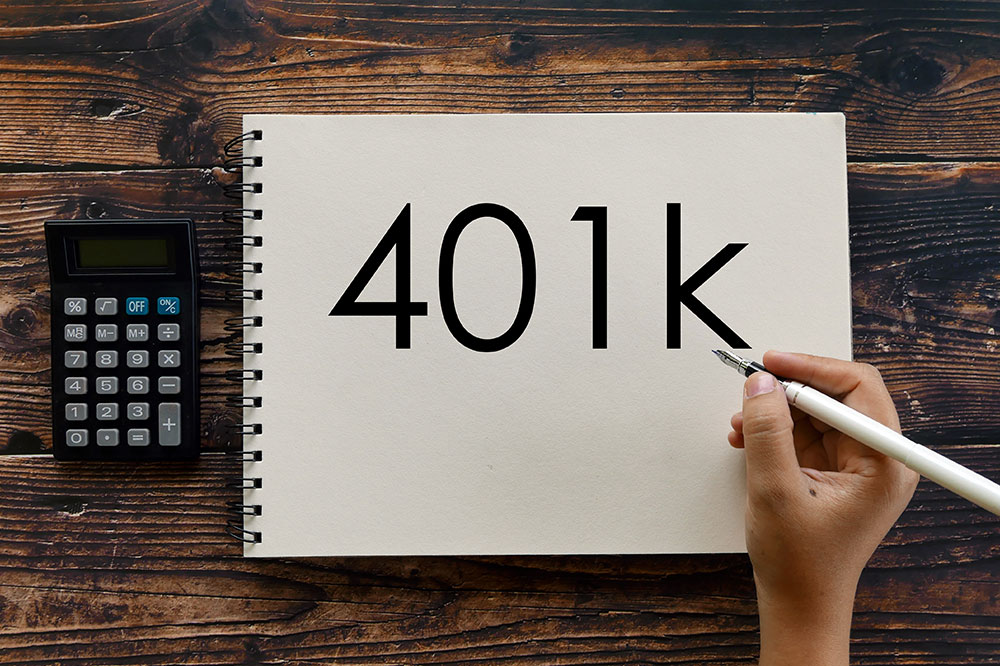An Overview of 401(k) Plans

Saving for retirement is one of the most crucial aspects of financial planning. If you work for the private sector, you cannot expect a paid pension. Meanwhile, the cost of living and expenses will continue to increase, so a good retirement portfolio will ensure do not have to compromise on your lifestyle once you retire. Among numerous ways to achieve saving goals, experts often recommend opting for 401(k) plans.
What is a 401(k) plan?
The US Internal Revenue Code outlines federal statutory tax law that all legal residents of the country must follow in a fiscal year. Its subsection 401(k) focuses on tax benefit retirement savings plans that employers provide for all employees in the organization. This is a part of the employee benefits that an organization offers. A 401(k) is a fixed contribution-based investment plan that can be withdrawn only after retirement, allowing employees to set aside a secure financial portfolio for the future. Over time, the amount is directly deducted from the employee’s salary with an equal contribution made by the employer for creating the retirement portfolio. The best part is that these investments reduce your taxable income for the year, allowing you to save more. So, you get a unique retirement portfolio that is sponsored by your employer with matching contributions based on the deduction from your salary.
Types of plans
You can invest in either a traditional plan or a Roth 401(k) portfolio. Traditional investments are only taxable when you withdraw after officially retiring from service. Alternatively, any withdrawals made from a Roth portfolio are exempt from tax liabilities in the future as you do not get the tax saving benefit during employment.
Picking the right plan
Traditional plans, in comparison with Roth, offer a wonderful opportunity to lower the burden of current year tax liabilities as all contributions to this portfolio are exempt during employment. The former is a breakup tax saving scheme suitable for lower tax slabs deducted upfront each year, while the latter is a lumpsum tax benefit claimed only upon retirement. Both plans have their pros and cons and offer benefits that are suitable for different people depending on their income-earning capacity and tax rate applicable.
Employees with a lower income expectation post-retirement will not incur a higher tax liability. So, to double their in-hand spending power, experts advise taking a traditional retirement savings plan so that the tax benefit claimed every year increases their purchasing power.
Employees with a higher taxable income will benefit from Roth retirement plans for two simple reasons. First, Roth contributions are deducted from the after-tax income. This means you have already paid any tax owed for the year, so there is no tax on the contribution. Second, any withdrawals made on the Roth plans following retirement will also not be taxable after the age of 59½. So, it is a better choice for high-income earners who may incur other tax liabilities upon late retirement.
As tax rates and laws change periodically, experts cannot recommend one plan over the other.
Reasons for investing in a 401(k) plan
Any type of investment helps secure your financial future. But the following reasons explain why such contribution-based retirement portfolios make for a better option:
Helps lower your taxable income as all contributions are pre-tax
You enjoy the flexibility to invest more or less depending on your financial standing
The earlier you start, the more you save in taxes and build a bigger retirement portfolio
You can easily transfer your portfolio from one organization to the other
Easy payroll deductions that help you save for the future
Contribution limits
As of 2022, employers under the age of 50 can contribute up to $20,500 every year. This means your tax liability for the year is also reduced by the same amount. However, employees over 50 can contribute up to $27,000 every year. Similarly, employers who match these contributions should not exceed the annual limit set by the Internal Revenue Code. Also, the total amount, including both employee-employer contributions, should not exceed $61,000 for those under the age of 50 and $67,500 for those over the age of 50.
The biggest employee benefit of investing in employer-sponsored retirement plans is that your pre-tax contributions will continue to be tax-deferred till the date of the withdrawal. This means there will be no income tax applicable on the gains as long as the money remains under 401(k) protection.
Options after switching jobs
If you are already receiving 401(k) tax benefits but plan to switch organizations, the ideal move is to transfer your current account to the new employer. This will enable you to receive all the existing benefits. It is also possible to leave your account with the current employer if they are willing to maintain it indefinitely. However, no further contributions can be made to the account once you quit the organization. Also, this is not a smart move for retirement portfolios with large investments. Alternatively, you can explore the following options:
Roll your 401(k) into IRA: This is a straightforward way to avoid being taxed immediately upon withdrawal. The IRS allows 401(k) investments to be moved into Individual Retirement Arrangements or IRAs after withdrawal to let individuals maintain the tax-free advantage. Banks, mutual fund companies, and brokerage firms offer various investment choices that can align with your current employer’s benefits. But the funds should be moved into a new investment category within 60 days after withdrawal; otherwise, the IRS will levy penalties and taxes for missing the deadline.
Withdrawing all retirement savings: The minute you withdraw your investment, all amounts will become taxable as per law. An additional early distribution tax may also be levied on top of that for employees under the age of 59½. This applies to traditional plans. With Roth IRA plans, it is possible to withdraw the investment amounts tax-free, but only if you have held the account for at least five years.






